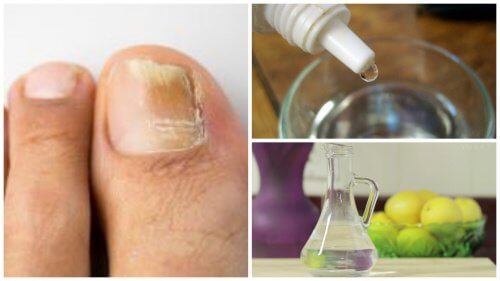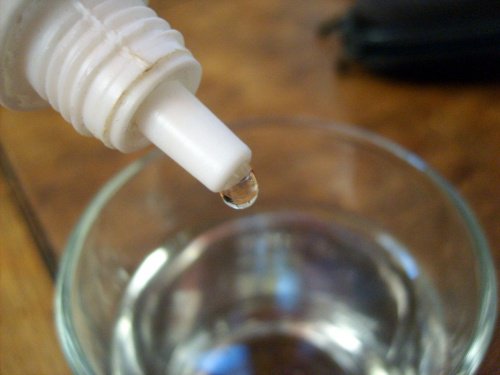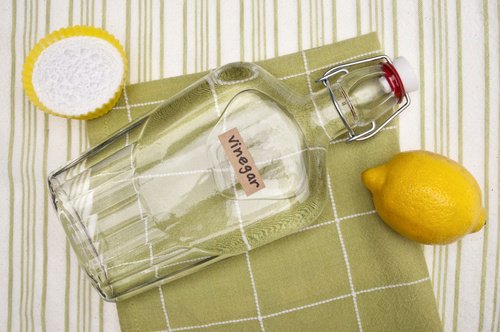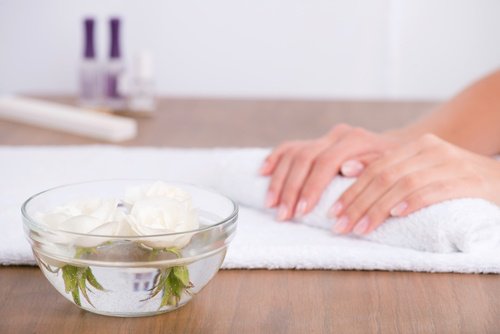Make your Own Natural Anti-Fungal Treatment for Nails


Reviewed and approved by the doctor Karla Henríquez
Fungal nail infections are a problem which often require medical treatment, not just for questions of aesthetics, but also for the sake of your health. It’s important to book an appointment with your doctor so that you can receive the appropriate treatment for your specific case.
Onychomycosis (also known as tinea unguium) is one of the most common fungal nail infections. The causes are generally dermatophytes, yeasts, or non-dermatophyte molds. They’re all microorganisms that grow in warm, moist environments.
Though it more commonly affects the nails on the feet, it can also affect the finger nails. The symptoms are more visible than they are painful, especially in the early stages of the infection.
This infection has a detrimental effect on the appearance of the nails, causing changes in the shape, size, color and even smell. Nails may appear yellow, thick and brittle (or scaly), while the skin around them turns red and inflamed.
If left untreated, the nail will become brittle, and may even fall off. As such, it’s absolutely vital to spot the signs of a fungal infection early on, and follow the advice given to you by your doctor.
Natural treatment for fighting fungal nail infections
According to popular belief, natural treatments can be used to combat fungal nail infections.
This natural antifungal remedy is topical and should be applied continuously over a set period of time. It’s important to understand that patience is the key with this kind of remedy, as the effects won’t be instantaneous.
All you need to make this remedy is:
- Hydrogen peroxide.
- 90% ethyl alcohol.
- White vinegar.
These three ingredients are well-known natural antiseptics and antifungals which can be used to treat all kinds of skin conditions and injuries.
The benefits of hydrogen peroxide

Thanks to its powerful antibacterial properties, hydrogen peroxide is commonly used for disinfecting wounds.
- It has one more oxygen atom than water. You can find it in most pharmacies as a 3% solution.
It’s an environment-friendly disinfectant that uses oxidization to kill pathogens.
- Using it on toenails will destroy the yeasts and dermatophytes that cause a fungal infection.
You might like:
Benefits of 90% ethyl alcohol
Ethyl alcohol is distilled for medical purposes, and you can find it in just about any first aid kit.
- You can also use it as a disinfectant and antibacterial, especially when treating skin lesions.
- It has been proven to be effective against the majority of bacteria and fungi, but not against bacterial spores.
It’s also commonly used during manicures and pedicures, helping to reduce the presence of fungi, and eliminating any microorganisms that might be left behind on tools.
Benefits of white vinegar

It is believed that the acidic compounds in white vinegar could be used to treat fungal infections on the skin.
- It’s a great natural antiseptic and antimycotic.
- It can also be used to help treat onychomycosis and athlete’s foot.
Applying it to infected nails will reduce itching and yellowing, and help get rid of any unsightly calluses that stop your feet looking their best.
How do you prepare this remedy to fight nail fungus?

Now that you’ve learned about the different properties of the ingredients that make up this remedy, the next step is to prepare it and start the treatment.
Ingredients
- 5 tablespoons 90% ethyl alcohol (50 ml).
- 5 tablespoons hydrogen peroxide (50 ml).
- 2 tablespoons white vinegar (20 ml).
Utensils
- 1 glass container
Directions
- Combine the alcohol and hydrogen peroxide in the glass container.
- Add the white vinegar and stir until well mixed.
- Cover and store in a cool, dry place.
- Wash the affected nail.
- Dry with a soft towel and apply a little of the solution using a cotton ball.
- If the nail is very thick, carefully file the surface and then apply the solution.
- Use twice daily.
Important
The best thing to do is follow the treatment plan recommended by your doctor, and avoid using home remedies unless authorized by a professional.
As an additional measure, disinfect your shoes, socks, and anything else that has come into contact with the infected nail(s).
All cited sources were thoroughly reviewed by our team to ensure their quality, reliability, currency, and validity. The bibliography of this article was considered reliable and of academic or scientific accuracy.
- Larruskain Garmendia, J., Idígoras Viedma, P., & Mendiola Arza, J. (2008). Onicomicosis: diagnóstico y tratamiento. Información Terapéutica Del Sistema Nacional de Salud. https://doi.org/10.1016/j.riam.2010.01.007
- Carrillo, L. (2003). Hongos. In Microbiología Agricola. https://doi.org/10.1007/sl0551-008-9963-l
- Pérez Suárez, B. (2011). El lenguaje de las uñas. Más Dermatología. https://doi.org/10.5538/1887-5181.2011.15.4
This text is provided for informational purposes only and does not replace consultation with a professional. If in doubt, consult your specialist.








